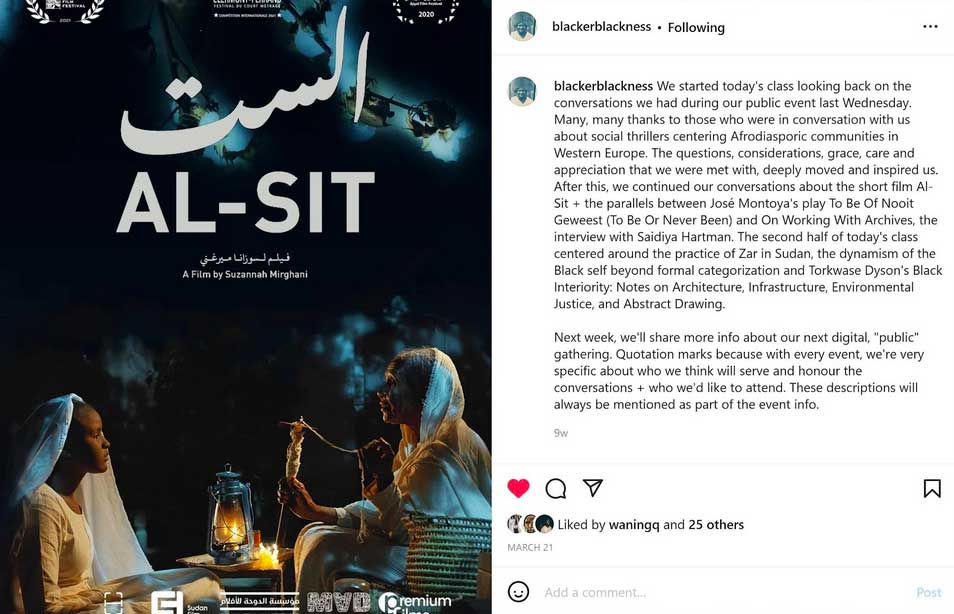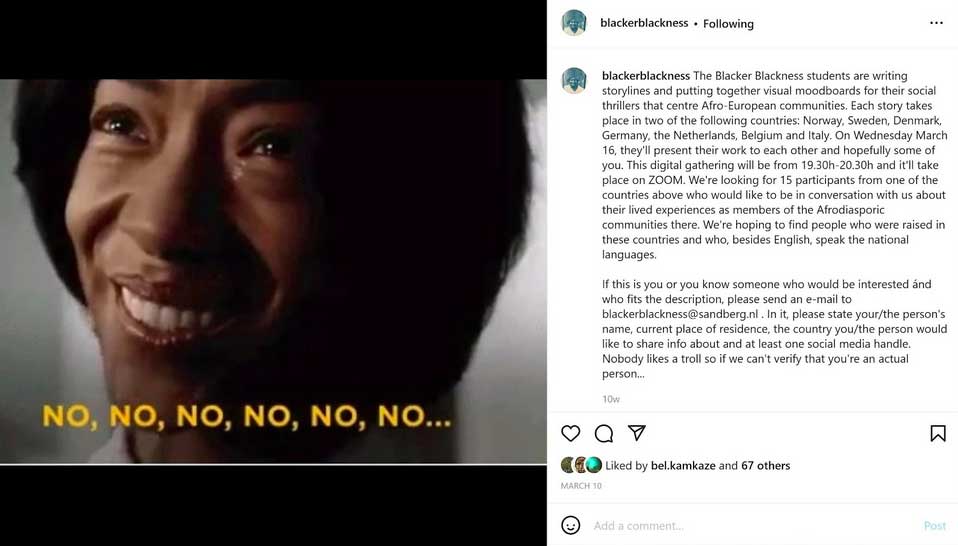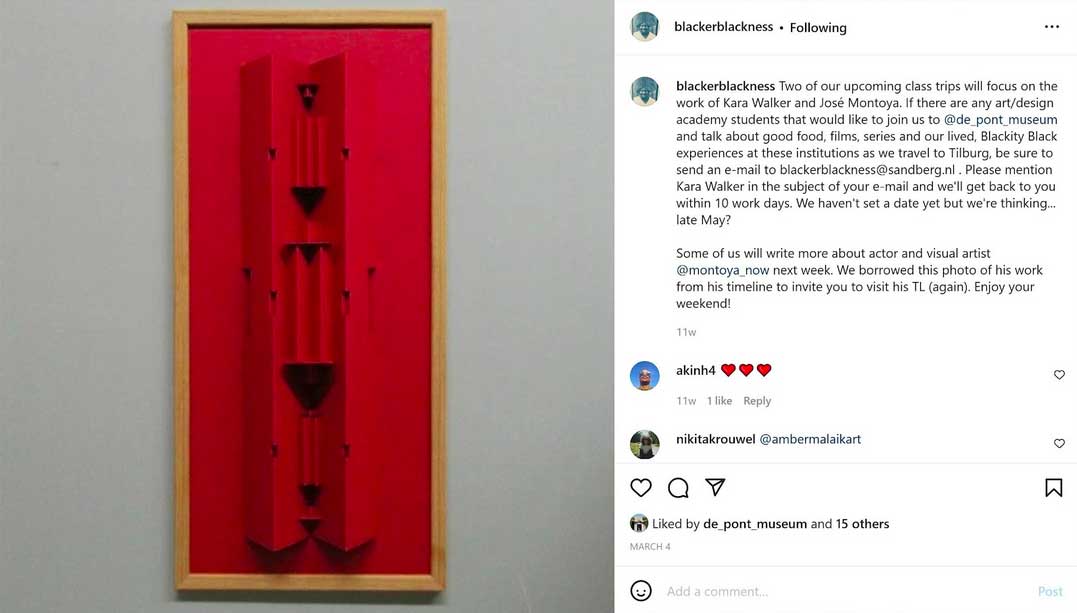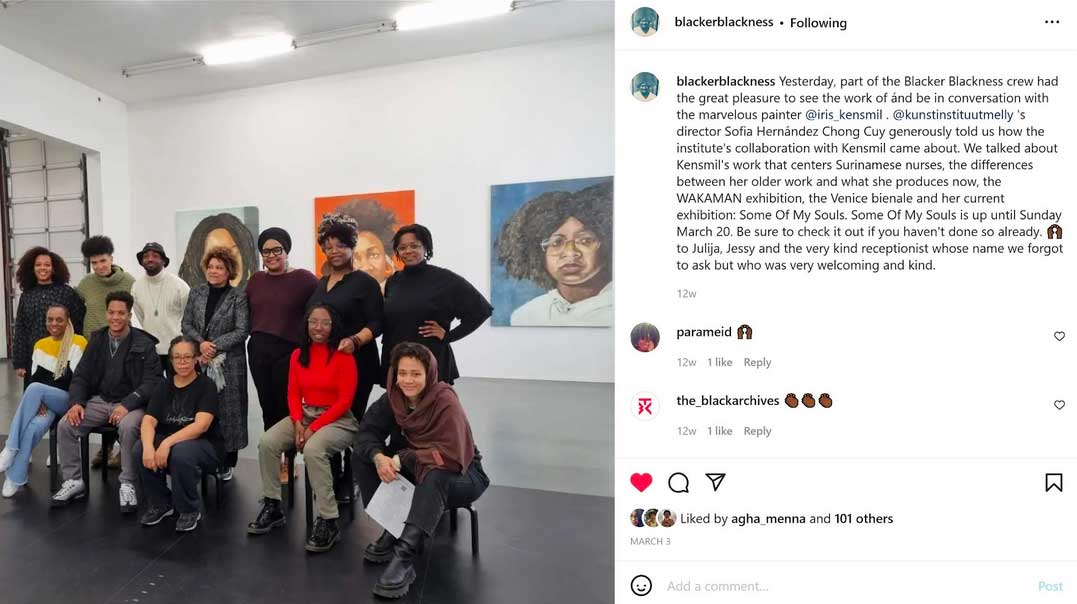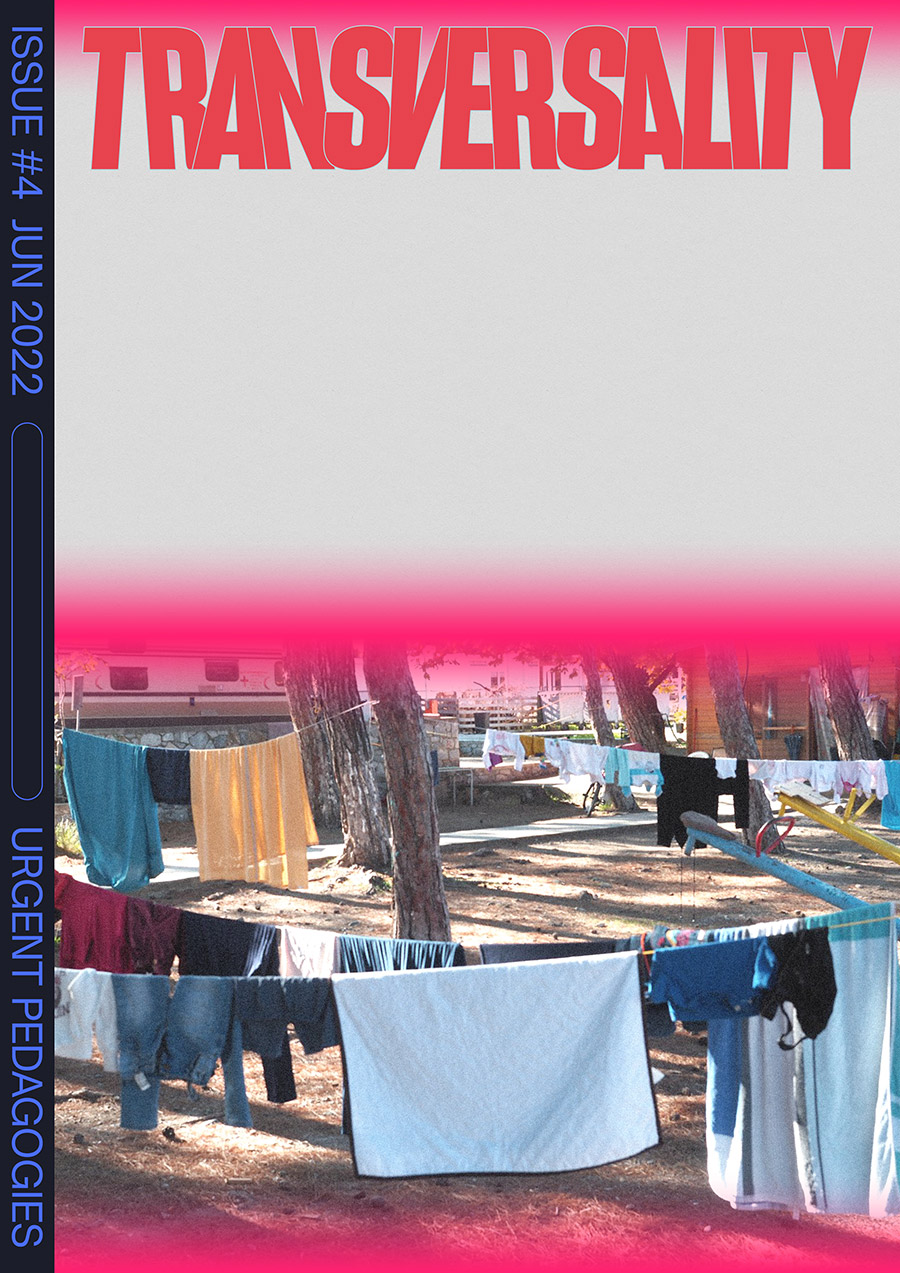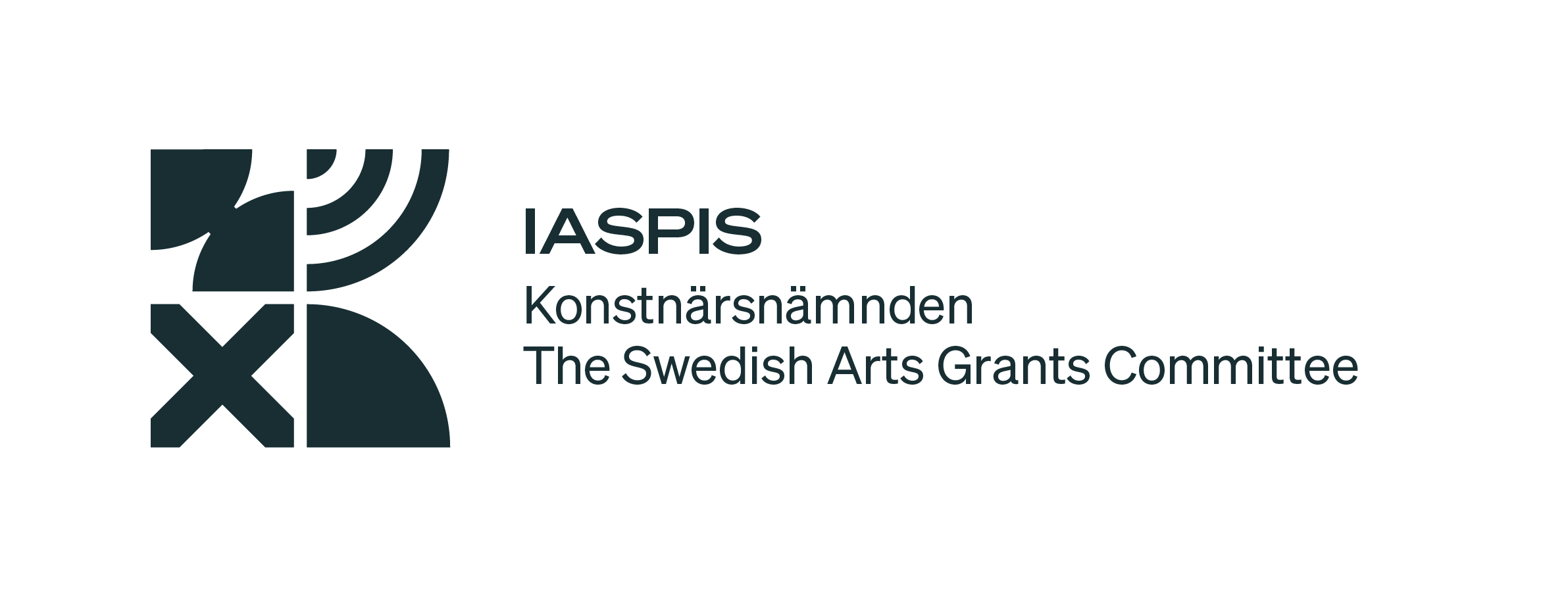Space as political discourse
Ola Hassanain
CATEGORY
In this interview Ola Hassanain responds to questions about her practice as an architect, artist, researcher, and educator. She’s working with urban researchers in Khartoum, Sudan, around issues of women, public space, and policies. Her research and pedagogical practice engages with politics of space and issues of cultural identity and gender.
Magnus Ericson: Can you briefly introduce us to your practice as an architect and artist and your research trajectories?
Ola Hassanain: I would say that my practice is a critical spatial practice, and I am interested in an expanded idea of space – space as discourse – political discourse. A discourse that counters what’s happening now in public spaces in Khartoum, particularly when protesting or standing up against state transgressions. I have become more interested in linking spatial practice to rebellious thought, resistance and organising. Seeing how the environment and living conditions around me in Sudan continue to deteriorate and because of that, wondering why that condition seems to be the status quo. But also acknowledging the intensity by which things are getting worse (here I mean the intensity of state transgressions and deployment of violence on people) and how it seems to be assigned to particular territories, cities and built masses around the world. I feel that the means by which people have been rebelling in Sudan and elsewhere, have informed me of how ideas of sovereignty are quite limited. To me, it always seemed that there is something else much broader and all-encompassing of peoples’ environment that is at play. This realisation has made me think of how spatial literacy can be a language that informs and shapes our ways of organising and resisting. So that rebellion is never only a body made vulnerable against the state, rather the entire built environment has to come into question.
I’ve been educated in architecture at the University of Khartoum, Sudan and it’s been quite a journey. I think there were a lot of conflicts that arose through it, because of the education. I went to do a master’s degree at the University of Westminster afterwards, that focused on globalisation and cultural identity. This was a Master of Art and my practice slowly transitioned from that into more of an artistic research practice, which led me to do a master at MaHKU, Utrecht Graduate School of Visual Art and Design
Lately, I have been more and more focused on the notion of catastrophe and how it’s related to architecture. I link catastrophe – the onset and continuation of uninhabitable conditions [1] – and architecture because of how I see building processes continuing regardless of what is happening to the people. The one thing you can always count on is city expansions and growth, through building. Together with the writer, cultural critic, and activist, Egbert Alejandro Martina I recently published writings about the correlations of uninhabitability, catastrophe and architecture through the process of building.
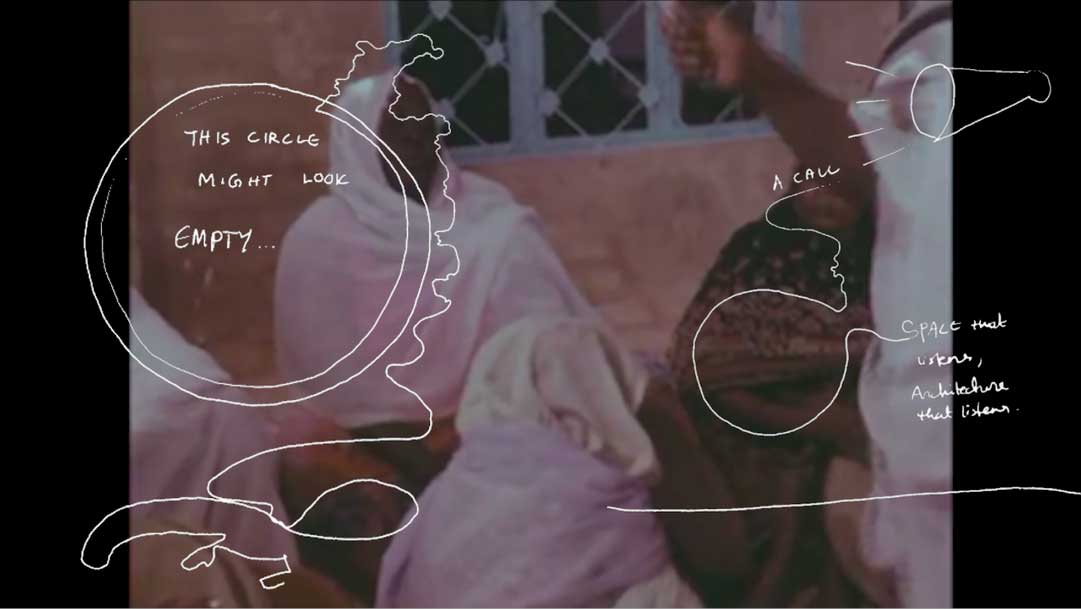
The Line that Follows (2022), video essay 11mins by Ola Hassanain
Pelin Tan: Can you tell us about the relation between your critical spatial practice and pedagogy?
Ola Hassanain: For me, I can refer to the project Workable Geographies-Edition 1, which I completed earlier this year funded by Hartwig Art Foundation and exhibited at Casco [2]. Since I try to make the practice generative through deep spatial analysis, I extend questions that arise from my practice towards my teaching. On the one hand it allows for me to carve a reflexive space and on the other hand open the space as discourse. The discourse then signals an architectural discipline that does not only deal with form, rather an all encompassing of other socio-political, environmental, emotional, and ecological factors that go into space-making. The work tries to deal with what is already in our surrounding, rather than following the “new”, innovative and problem-solving orientation that pathologizes everything.
The Workable Geography project was my collaboration with urban researchers in Khartoum. We did comparative research between the prominent neighbourhood of Amarat – that is now experiencing an extensive amount of high rise building because it has been swallowed inside the centre of the city- and another neighbourhood called Haj Yousif, which experiences the same amount of building yet majority of it is classified as informal.
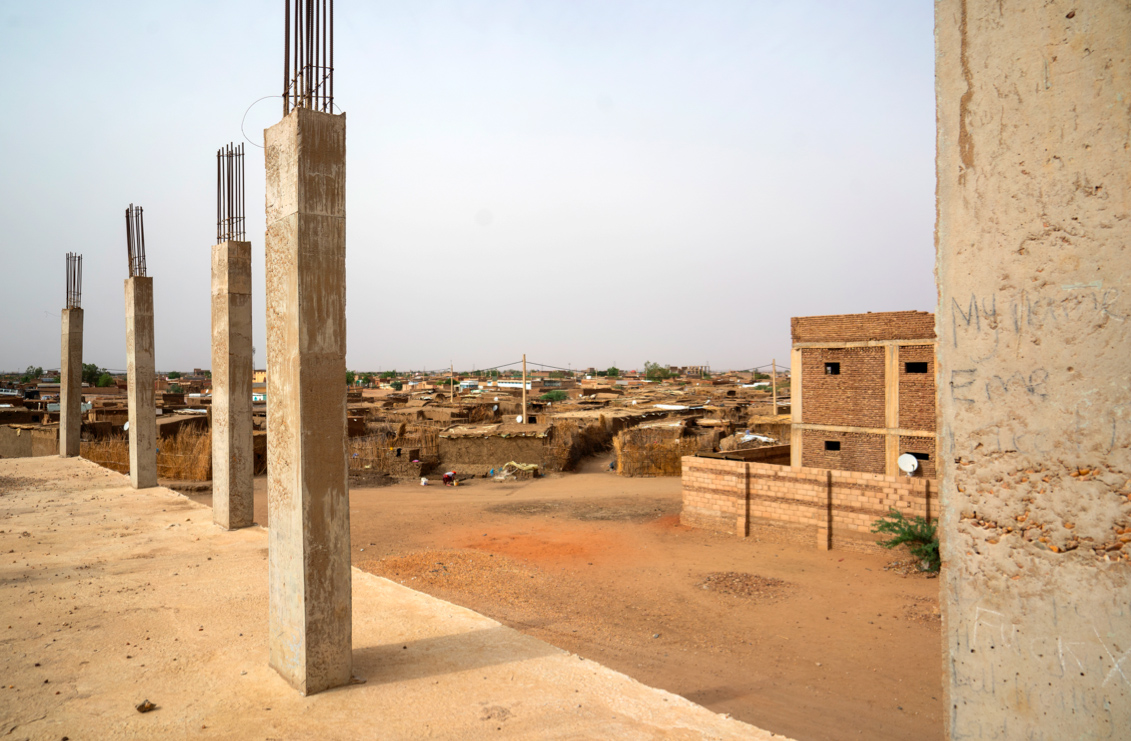
The Haj Yousif area in Khartoum. Photography by Ala Khier.
In the work we transmit the concerns provided by locals of these areas as guidance to what type of questions we ask inside the ministry of Urban Planning and Infrastructure and what information we look for or how we ask for information. It was a way to build information about spaces based on urgencies of people in the space. That information is now in the process of becoming open access online, and everything is targeted at architecture students. For the students, it’s a case study that provides an analysis of how the ministry organises information and reflects that onto our environment. What happens when you look for information coming from ”uncharted” or unorganized spaces?
The pedagogical thread and the practice thread are recursive to me – one has to inform and shape the other. The practice delivers moments that you can later reflect on and analyse in class. For example, in the experimental Master course Blacker Blackness I’m teaching at Sandberg Institute [2], we have had to ask the question of why we as people in the city have little agency over the built environment. Why do we as black and the African diaspora find it hard to connect to European cities? What this brings forth is an analysis of the spatial lexicon available to us dragging with it the genealogy of expansion, feudalism and imperialism of Europe’s world making ideas. We came to realise that what presents hardships for people inhabiting the city, might be rooted in the city’s (the built environment) capacity to severe peoples’ connection to making ’form’ or built mass. Making form – through building –has always been what people do, but with architectural discipline there is a foreclosure on making buildings (form) and thus presenting a constant interruption of our ecologies of being.
In the Blacker Blackness class, I think we’re always confronted with the notion that we don’t really have language available to discuss the deficiencies of the physical environment around us in relation to the lives we live and how we want to live, and the idea of black people actually flourishing under certain epistemological systems. So, I think that one thing was to actually be intentional about it. Trying to really anchor our desires for, for example, community living. How do we envision that and what type of obstacles are we prepared to face? We ask, would it be worth it to invest in generating knowledge around ideas that are still rooted in the property. Can we imagine a world, for example, that does not have to keep perpetuating enclosures as the only way to think about ownership, or to give space to people? I think these are all things that reflect into the concerns I have with regards to catastrophe.
The pedagogical element in my practice has to really create transient space. It’s something that also takes different forms, different time spans, so quite recently we have tried to link our ideas to different formations of language plays in the mainstream media. We did this exercise, and that was also part of the assessment, which is basically to write a story that centres on a black person’s use of Amsterdam in the 18th and 15th centuries. We published open calls to the public to include temporarily a public audience and assessment moment that would usually be a closed experience inside the institution.
Pelin Tan: Can you tell us a little about your experience from working at an architecture faculty under oppression?
Ola Hassanain: I received my education between 2000 and 2001, and in 2006 at the Faculty of Architecture – actually, it was a department of architecture and part of the Department of Engineering. From very early on, protests were always breaking out on the University of Khartoum campus, and so protesting was closely related to how I was educated about modernist architecture. I remember that one of the things that stood out to me was that we would get these single line drawings showing us a site in the city, it indicated a plot of land and we would have no information of what’s around it. I think this was very much aligned with an idea of tabula rasa, where everything is kind of empty of content and meaning until you put information into it. I found it really difficult to consider a plot of land completely dislocated from what is around and from the ecology of the area. The plot drawings seemed to be floating around in the emptiness of the white paper.
In addition, urban plans in Khartoum were connected to the Ministry of Defence and many plans were therefore confidential, any request for access was a security breach. I guess the physical environment really stood out to me as something we were not in charge of and the way we would see our surroundings, access it, or imagine it was very much controlled. Architects never had any kind of form of organisation, like a union outside of accrediting bodies and in relation to these kinds of dynamics I started to feel that the position of the architect was of security and gatekeeping of our surrounding. The position of architects seems to reveal itself as something that’s very loyal to corporations and the executive part of the state, and very much disassociated from the public as a whole. So you start to see how that has been nurtured for the past hundred years, more of a continuation of the imperial project.
Pelin Tan: Can you also say something about the gender situation?
Ola Hassanain: There are more women than men in architecture institutions. Howver more men go into the market to set up architectural firms and so the market remains male dominated in the decision-making positions. When I started working as an architect, I mainly designed residential buildings. Most of my clients were women who would be very closely involved in the design process. The house was a spatial lexicon for gender, because women were assigned domesticity, and they also became in charge of relaying the functions of a house in accordance with social relations and their own positionality inside of these relations.
Magnus Ericson: Tell us about your pedagogical strategies in relation to how you work as an artist, architect and researcher with institutions in Europe.
Ola Hassanain: I’m fascinated by the capacity of institutions to neutralize agency in discourse. The neutralization happens through the institution’s capacity of designing engagement, and never directly addressing the issues at hand, for example public programs or open letters. There is always a way by which a critical systemic problem is turned into spectacle and “dealt with” by designing a framework that encapsulates it. However I also see a potential in this for people coming in from different contexts. I think design of engagement allows you to centre a variation of contributions to its knowledge accumulation. This, in an interesting way, leads to the institution avoiding accountability for certain things by assigning it to individuals. There seems to be a tendency to make urgencies the commodity of certain bodies that are entangled with urgencies and at closer proximities to contested discourse. The institution’s design engagement with certain perspectives making the urgency benign, fail to retain the information enough for it to create shifts in the structures. The discourse barely ends up having deep impact on the institution. The bodies leave a program and the urgency leaves with them. I started to appreciate certain political volatile parts about the University of Khartoum. In that condition, you could read certain boundaries of what the institution would do and wont do clearly. I just appreciate things being explicit at times and less hidden and sinister. Here, in Europe anything can be engaged with through institutions. It makes it seem like they are doing so much, yet things remain the same.
My exhibition moment is basically punctuation in my research. So it’s something that’s ongoing and I use these spaces to be able to reflect. With regards to the mediums I’ve been using, it’s always been multimedia formations. I found performance lectures really, really useful. Because it creates space for a moment, for example, to cut through the theory by inviting different voices, having videos playing, sound and so on. Performance lectures allow for building floating constellations and interconnecting them and thus not allowing for a singular way of translating. In Performance lectures there are different channels of translation. With your students you can embody a scavenging mode of doing things and making meaning. You move around discourse picking things that you feel would work and connect them and see what they tell you.
Magnus Ericson: What are you currently working on?
Ola Hassanain: I’m looking into spatial shadow or shadow space, which is the real estate’s official name for the difference between vacant and available space in the real estate market – often referred to as “shadow space.” Shadow space is space that is currently occupied but is still being marketed for lease. Of course, probably this is space that is paid rent for and kept, but nobody occupies these spaces and I’m trying to link that with the idea of architecture creating the uninhabitable a value that is being built on emptiness or absence. I believe there is a potential of shadow space in this relation. This allows us to see the real power that the built environment really has, but also in relation to how people are kind of rendered absent in the process of building value. Emptied space links to the idea of tabula rasa, modern architecture continues to assume things are empty – ecologically empty. The built environment creates systems to manifest emptiness continually and I think shadow space is one of those systems. As mentioned, I am working on a text with Egbert Alejandro Martina titled Architectures of the (Un)inhabitable which explores moments of emptying space. Emptied space is the infrastructure for the world we live in. You need for space to remain empty ecologically and physically so that this machine keeps running and create value in the market in one way or another.
This conversation between Pelin Tan, Magnus Ericson and Ola Hassanain took place online between Batman, Stockholm and Amsterdam 22nd February 2022, then transcribed and edited.
is an architect, artist and researcher working between Sudan and The Netherlands. She trained her focus on the subtle politics of space—namely, how built spaces react to and reinforces violence from state entities, which in turn, creates a built environment that regulates the lives of those who inhabit it. Her most recent work explores an idea of “space as discourse,” an expanded notion of space that encompasses political and environmental questions. Her work tries to develop a spatial vocabulary that follows how ruptures presented by ‘political events’, make it possible to aspire to new kinds of ecologies. Ola’s development of critical spatial practice is partly informed by her post-academic training; an ongiong Rijksakademie residency, a BAK fellowship 2017-2018 and teaching in HKU University of the Arts Utrecht and Sandberg Institute amongst others.
